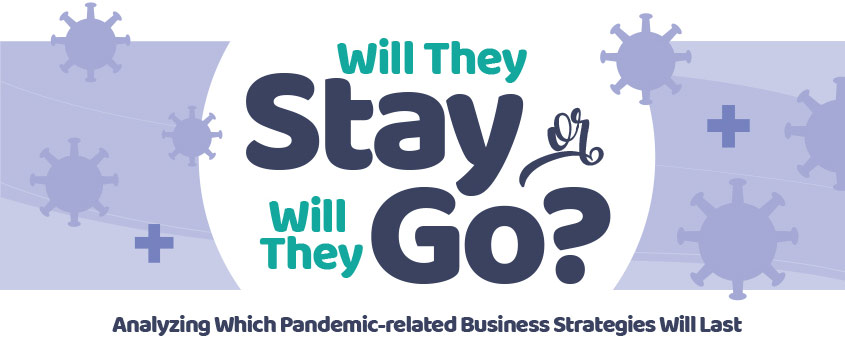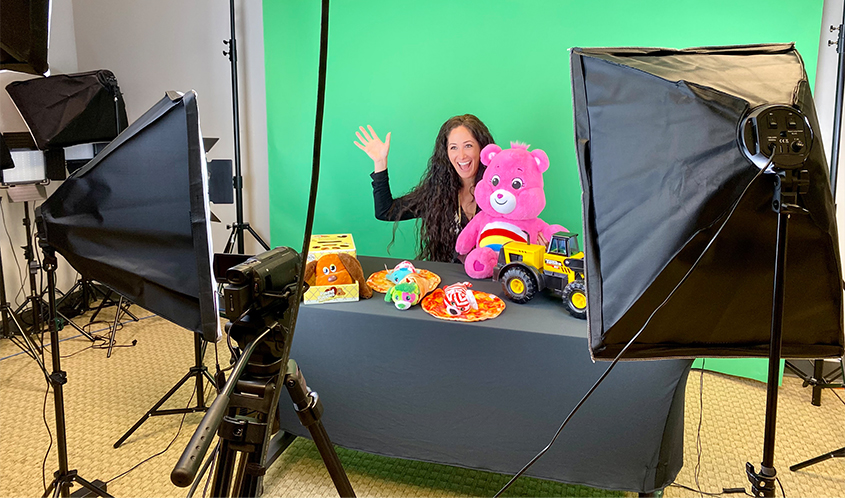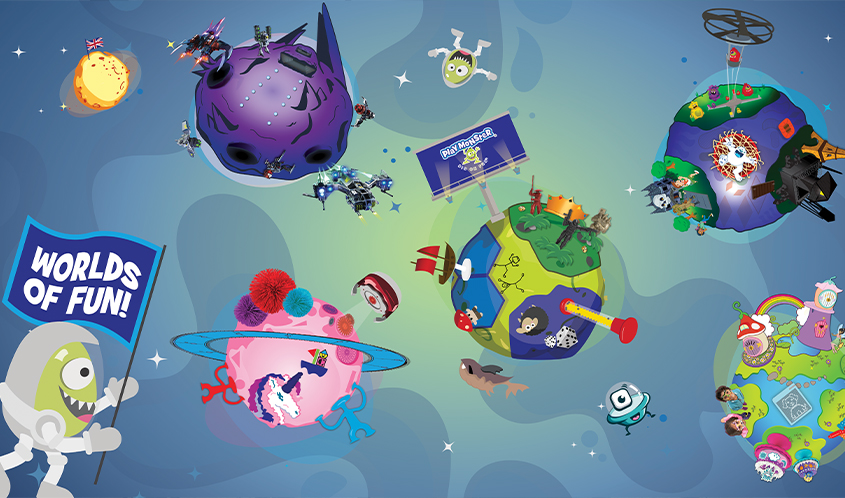
There’s no doubt that the toy industry is rooted in tradition, from counting on tried-and-true play patterns to doing business in-person at major events throughout the year. But when a global pandemic enters the picture, all of that goes out the window.
During this past year, toy companies were faced with countless challenges, staying in touch with consumers, spending endless hours strategizing, shifting, and problem-solving from afar, all while trying to get used to a new normal. Ironically, these obstacles are exactly what drives innovation.
The Toy Book spoke with 14 top manufacturers to pinpoint exactly what evolving trends and business practices came out of or were accelerated during 2020 due to the pandemic, and evaluate which ones are short-term fixes and which are here to stay.
DIRECT-TO-CONSUMER RETAIL
Heading into 2020, the in-person shopping experience was going through a renaissance of sorts. Many retailers — from independents to big-box names — were embracing the experiential model to give their customers a fresh, engaging shopping experience. But when nationwide lockdowns and stay-at-home orders were mandated last March, brick-and-mortar locations closed and manufacturers stepped up their direct-to-consumer retail strategies. Many had either added a shopping section to their websites altogether or expanded their existing online offerings. The verdict: a tie between being a short- and long-term trend.
For Tangible Play, creator of the Osmo brand of physical and digital learning products, having a strong online presence was always a company priority. To make up for the loss of sales at brick-and-mortar stores, the company shifted its focus on Amazon, increasing sales by 30%, according to Karen O’Dell, director of public relations at the company.
Similarly, Ceaco has always had a direct-to-consumer option for its jigsaw puzzle brand, but since puzzles were one of the top-performing and popular categories during the pandemic, the company experienced unprecedented sales in 2020. “When the pandemic first hit in March, consumer demand was off the charts,” says Jason Schneider, vice president of product development at Ceaco and Gamewright. “We did more direct-to-consumer business in one month than we had done in the entire 2019 holiday shopping season combined.”

However, sales tapered off during the spring when the company was forced to shut down its manufacturing and fulfillment centers due to COVID-19 precautions. “We’ve always prided ourselves as having the agility to react to the moment, but we felt the pain of many companies whose manufacturing and shipping channels were affected by the pandemic,” Schneider says. “On the one hand, we were fortunate to have a strong inventory of games at the start of 2020. On the other hand, jigsaw puzzle demand defied all forecasts and expectations.”
Schneider also says that its website analytics show that shoppers are still visiting its website in record numbers, and Ceaco anticipates being back up and running to pre-COVID conditions by mid-year. Even though consumers are showing up in larger numbers to shop in person again, the advantages of direct-to-consumer business remain. The convenience factor is huge, and it’s likely that online shopping will continue to dominate.
“Online shopping has been growing at a sizable rate year over year, and the data continues to show that trend is only going to continue,” says Scott Goldberg, managing director and executive vice president of Carve Communications. “As a result, we saw our partners allocate their marketing budgets in a variety of ways in 2020 to test and learn what will drive the best conversions for online sales. … We are able to report exactly how much money was spent where, when, and with who, and exactly what the result was in regards to traffic and sales. That’s a true game changer.”
FEWER KIDS AT RETAIL
Parents aren’t bringing their kids out shopping as much as they did pre-pandemic, resulting in less impulse purchases. As mentioned above, online shopping continues to be the dominant method for consumers, and curbside pickup options are preferred. The verdict: short-term.
“The growth in online channels resulted in an increase in sales of higher price point items and a decrease in the under $10 impulse purchase category,” says Laura Henderson, executive vice president of marketing at Spin Master. “For in-store, it’s more important than ever to stand out as shoppers are more mission-focused, looking to reduce the amount of time they spend in stores.”
Most manufacturers agree that a well-rounded, all-channel approach is the best strategy to implement when the pandemic eventually winds down. “Consumers want in-store experiences,” says Mattel’s Executive Vice President and Chief Commercial Officer Steve Totzke. “We will leverage what we learned in 2020 from the success of digital campaigns and virtual consumer events, and will complement that with compelling in-store events to fully optimize the shopping experience and path to purchase.”
GOING VIRTUAL
Between daily Zoom meetings, virtual studios, and online events, our daily and professional lives have gone digital. The verdict: short-term trend.
“The pandemic will 100% change the way business is conducted, and it will be all for the positive,” says Anna Mowbray, owner and COO at ZURU. “I’m hopeful for consolidation of toy fairs as we pivot and all work more succinctly and efficiently with virtual tools. We’re continuing to push the boundaries on how we operate virtually, but also planning on how we open up to in-person meetings and shows in the future that will allow for deeper interactions.”
For an industry that relies on hands-on, in-person meetings for product demonstrations, perhaps the pandemic’s biggest disruption is the lack of trade shows for the foreseeable future.
“We are able to ‘always’ be on the sales cycle with customers as jumping in a Zoom is fast versus scheduling an in-person meeting and/or waiting to see a buyer until a trade show,” says Josh Loerzel, vice president of sales and marketing at Hog Wild. “The disadvantage is massive, however. We lose the energy of a face-to-face meeting, and for a retail category like toys, it relies so much on buyers actually playing with your toy to see performance and appeal.”
Moving forward, a hybrid model will likely take over — from a smaller scale of more flexible working-from-home policies to a larger scale of tying in virtual components to traditionally in-person events. “We’ve managed to increase cohesion, productivity, and team members are thrilled to have more time in their days thanks to less commuting,” says Andrew Yanofsky, head of marketing and operations at WowWee. “The past year has proved for us that this will certainly not slow us down.”
PRODUCT INFLUENCED BY DIGITAL-FIRST ENTERTAINMENT BRANDS
Entertainment consumption is increasing rapidly thanks to connected TV, streaming services, and other digital-first platforms, like YouTube. Manufacturers are re-evaluating the licenses they take on and seeking out new options to offer products based on these brands, channels, and influencers. These changes were fueled by the pandemic during which reliance on movie theaters decreased. The verdict: long-term.
“Digital celebrities and trends are here to stay,” says Bonkers Toys’ Senior Vice President of Sales and Marketing Deborah Stallings Stumm. “Kids and teens are consuming entertainment in ways very different than their parents did. YouTube, social media, and streaming platforms reign supreme with our kids and the hottest toys will need to reflect those trends and be advertised in those arenas.”
This shift in the way that kids are consuming content even before the pandemic began. Digital-first platforms give consumers access to content whenever and wherever they want it, and streaming services are making old franchises relevant again.
“For many families, their TV is no longer their first destination when they’re looking for their favorite co-viewing content,” says Laura Zebersky, president of Jazwares. “For toy companies, this offers us an exciting opportunity to work with emerging properties and create toy lines that directly complement what kids are watching on their screens.”

EMPHASIS ON “PANDEMIC-PLAY” CATEGORIES
Family games, puzzles, construction toys, activity sets, educational products, and outdoor and active toys were the most popular toy categories of 2020. More companies are branching out of their traditional categories of expertise to offer these toys in 2021 to take advantage of the high demand. The verdict: short-term trend.
“The pandemic has reacquainted families with the importance of being together and spending time together — this family dynamic will have a positive impact on these areas of play and will continue to grow,” says PlayMonster’s Vice President of Sales and Marketing and Chief Fun Officer Scott Flynn. “As these categories continue to grow we will continue to maintain these as core offerings while exploring how we can expand.”
Instead of looking at it as “pandemic play” categories, companies have taken a step back as consumers rediscovered the meaning of play in their lives. “There has been a complete magnifying glass put on what play is in general,” says Glenn Abell, president and general manager of Moose Toys USA. “What it really comes down to is developing the best toys that appeal to kids and adults alike, and our focus will continue to be on bringing the most innovative products to market each and every year.”

